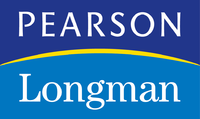Longmans, Green
 |
|
| Parent company | Pearson Education |
|---|---|
| Founded | 1724 |
| Founder | Thomas Longman |
| Successor | Pearson PLC |
| Country of origin | England |
| Headquarters location | Harlow |
| Publication types | Reference works, textbooks |
| Imprints | Pearson Longman |
| Official website | www |
Longman is a publishing company founded in London, England, in 1724 and is owned by Pearson PLC.
Since 1968, Longman has been used primarily as an imprint by Pearson's Schools business. The Longman brand is also used for the Longman Schools in China and the Longman Dictionary.
The Longman company was founded by Thomas Longman (1699 – 18 June 1755), the son of Ezekiel Longman (died 1708), a gentleman of Bristol. Thomas was apprenticed in 1716 to John Osborn, a London bookseller, and at the expiration of his apprenticeship married Osborn's daughter. In August 1724, he purchased the stock and household goods of William Taylor, the first publisher of Robinson Crusoe, for £2282 9s 6d. Taylor's two shops in Paternoster Row, London, were known respectively as the Black Swan and the Ship, and became the publishing house premises.
Longman entered into partnership with his father-in-law, Osborn, who held one-sixth of the shares in Ephraim Chambers's Cyclopaedia (1728). Longman himself was one of the six booksellers who undertook the responsibility of Samuel Johnson's Dictionary (1746–55).
In 1754, Longman took into partnership his nephew, Thomas Longman (1730–1797), and the title of the firm became T. and T. Longman. Upon the death of his uncle in 1755, Longman became sole proprietor. He greatly extended the colonial trade of the firm. In 1794 he took Owen Rees as a partner; in the same year, Thomas Brown (c. 1777–1869) entered the house as an apprentice.
Longman had three sons. Of these, Thomas Norton Longman (1771–1842) succeeded to the business. In 1804 two more partners were admitted, and the former apprentice Brown became a partner in 1811; in 1824 the title of the firm was changed to Longman, Hurst, Rees, Orme, Brown & Green.
In 1799 Longman purchased the copyright of Lindley Murray's English Grammar, which had an annual sale of about 50,000 copies. In the following year Richmal Mangnall's Historical and Miscellaneous Questions for the Use of Young People was purchased, and went through 84 editions by 1857. About 1800 he also purchased the copyright of Southey's Joan of Arc and Wordsworth's Lyrical Ballads, from Joseph Cottle of Bristol. He published the works of Wordsworth, Coleridge, Southey and Scott, and acted as London agent for the Edinburgh Review, which was started in 1802. In 1802 appeared the first part of Rees's Cyclopædia, edited by Abraham Rees. This was completed in 39 volumes plus 6 volumes of plates in 1819.
...
Wikipedia
